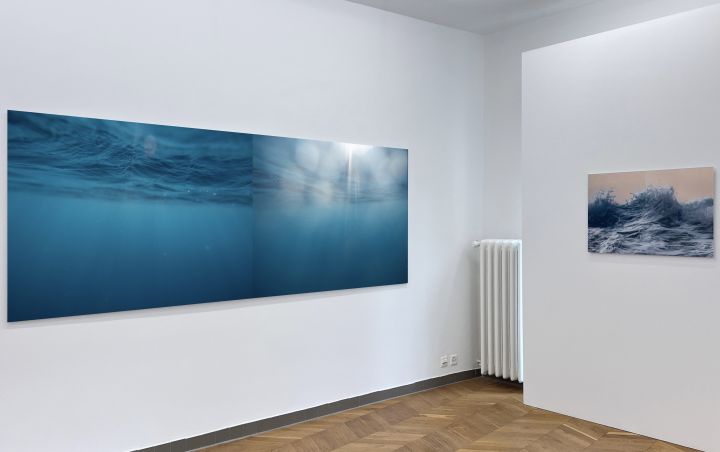With the exhibition Nami, Kawa, Tsuki – Wave, River, Moon – Syoin Kajii once again turns his gaze to the elemental forces of nature, revealing a remarkable evolution in his photographic practice. Featuring 22 works, the exhibition presents both iconic motifs and entirely new pieces created in 2024 and 2025, many of which are being shown to the public for the first time. In addition to large-scale panoramic photographs measuring 112.5 x 300 cm (44 1/4 x 118 1/8 in.), the exhibition also includes a video installation that adds a further layer to the meditative quality of Kajii’s work.
Born in 1976 in Fukushima Prefecture, Japan, Syoin Kajii studied at the Koyasan University in Wakayama Prefecture before embarking on a spiritual path and being ordained as a Zen monk in 2001. His artistic practice is deeply intertwined with this spiritual foundation: his images are not just visual records, but condensed experiences of time, light, movement and space, grounded in a profound attentiveness to the present moment.
Kajii first gained international recognition with his Nami (Wave) series, for which he spent years photographing Japan’s rugged coastline. Published as a photobook in 2004, the series received the Photographic Society of Japan Award for Best Newcomer. Since then, his work has been exhibited internationally, including at Huis Marseille in Amsterdam, the Setouchi Triennale in Japan, the Yokohama Museum of Art, and in multiple shows at Christophe Guye Galerie in Zurich.
In Nami, Kawa, Tsuki, Kajii expands his photographic vocabulary. Alongside the wave – a symbol of transience and perpetual renewal – he now turns his attention to rivers (kawa) and nocturnal scenes illuminated by the moon (tsuki). In this work, Syoin Kajii draws inspiration from Gachirin-kan – an ascetic practice in which the light of the full moon is quietly visualised within the mind. Rooted in the tradition of Esoteric Buddhism, this contemplative exercise serves to calm unsettled emotions and to create space for a deeper encounter with stillness.
These recent works place even greater emphasis on the painterly and contemplative aspects of Kajii’s vision. His large-scale photographs in particular invite prolonged observation rather than a fleeting glance. The accompanying video work deepens this encounter: a rhythmic immersion into the essence of nature itself.
Today, Syoin Kajii is considered one of the most significant voices in contemporary Japanese photography. His works form part of several prominent public collections – including the permanent collection of the Rijksmuseum in Amsterdam. Rather than documents, his photographs are visual meditations – moments of lived presence distilled into image. Nami, Kawa, Tsuki is an invitation to discover the quiet poetry of the world: in the movement of water, the glow of moonlight, and the stillness between images.
